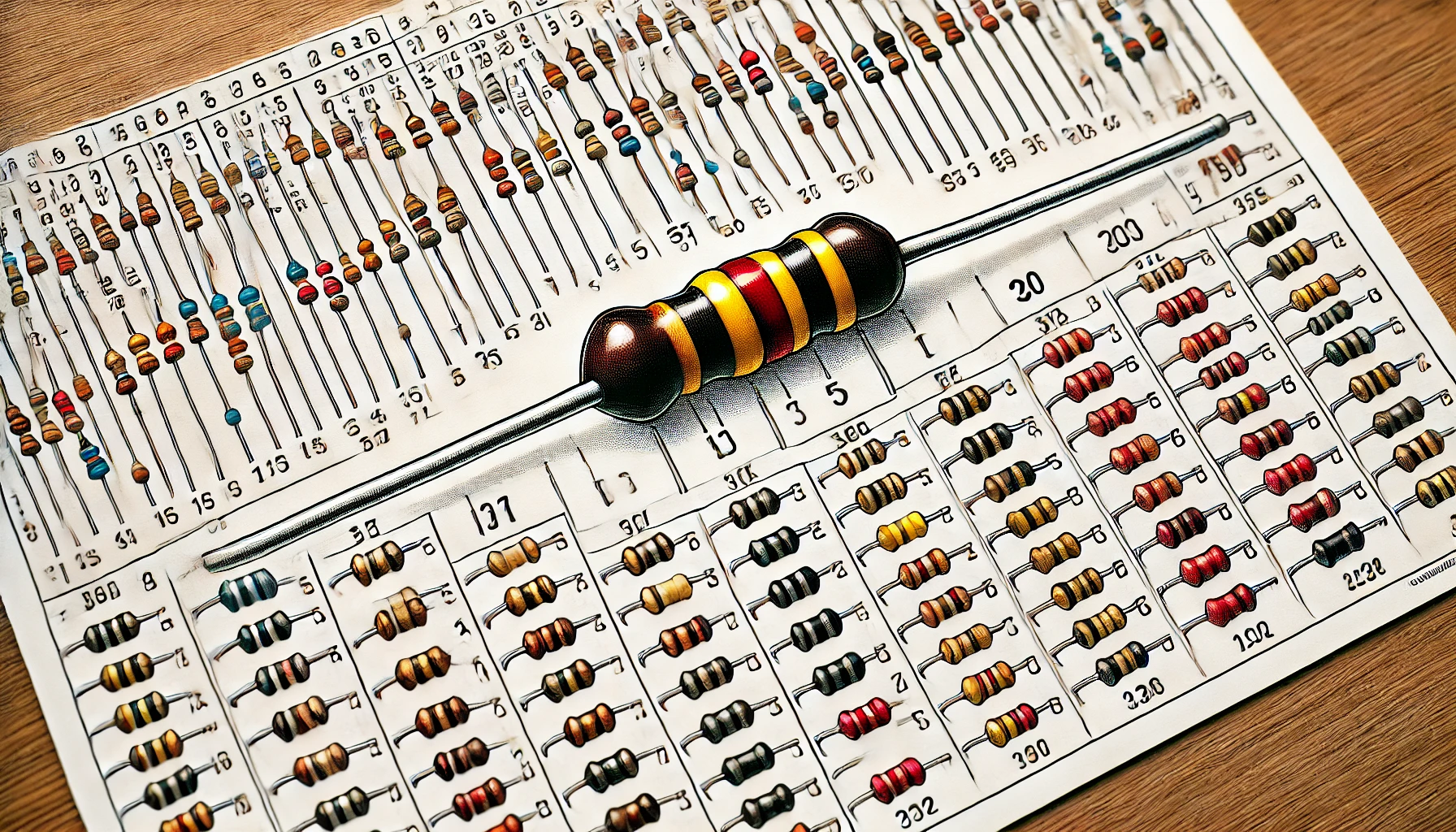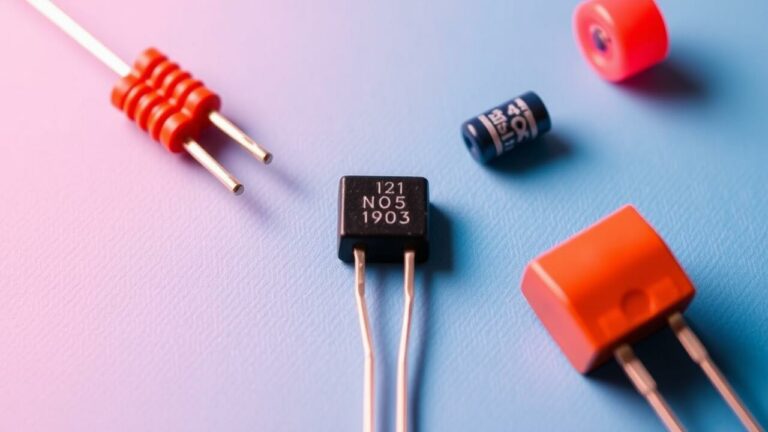How to Decode Resistor Color Bands
Understanding how to decode resistor color bands is an essential skill for anyone involved in electronics. Whether you’re a hobbyist or a professional, this knowledge allows you to identify the resistance value of resistors quickly and accurately. In this guide, we’ll walk you through the process of reading resistor color codes, explain the significance of each color, and provide tips to help you remember these codes easily.
What Are Resistor Color Bands?
Resistors are a fundamental component in electronic circuits, used to control the flow of current. They come in various shapes and sizes, but most have color bands printed on them to indicate their resistance value, tolerance, and sometimes temperature coefficient. These color bands follow a standard code that can be decoded to determine the resistor’s specifications.
The Basics of Resistor Color Coding
Resistor color bands are read from left to right, with each color representing a specific digit, multiplier, or tolerance. Here’s a quick overview of what each band represents:
- First Band: The first significant digit of the resistance value.
- Second Band: The second significant digit of the resistance value.
- Third Band: The multiplier, which indicates the power of ten by which the two significant digits should be multiplied.
- Fourth Band (if present): The tolerance, which shows how accurate the resistor’s value is.
Color Code Chart
To decode the bands, you’ll need to refer to a color code chart. Here’s a standard chart used in electronics:
| Color | Digit | Multiplier | Tolerance |
|---|---|---|---|
| Black | 0 | 10010^0100 | ±20% |
| Brown | 1 | 10110^1101 | ±1% |
| Red | 2 | 10210^2102 | ±2% |
| Orange | 3 | 10310^3103 | N/A |
| Yellow | 4 | 10410^4104 | N/A |
| Green | 5 | 10510^5105 | ±0.5% |
| Blue | 6 | 10610^6106 | ±0.25% |
| Violet | 7 | 10710^7107 | ±0.1% |
| Gray | 8 | 10810^8108 | ±0.05% |
| White | 9 | 10910^9109 | N/A |
| Gold | N/A | 10−110^{-1}10−1 | ±5% |
| Silver | N/A | 10−210^{-2}10−2 | ±10% |
Step-by-Step Guide to Decoding
Let’s break down the process of decoding resistor color bands with a practical example.
Example: Decoding a Resistor with Bands Brown, Black, Red, and Gold
- Identify the Bands: Brown, Black, Red, and Gold.
- First Digit (Brown): According to the chart, brown represents 1.
- Second Digit (Black): Black represents 0.
- Multiplier (Red): Red represents 10210^2102 or 100.
- Tolerance (Gold): Gold represents ±5%.
Calculation:
- Combine the first and second digits: 10.
- Multiply by the multiplier: 10 x 100 = 1000 ohms or 1k ohm.
- Tolerance: ±5%.
So, a resistor with the bands Brown, Black, Red, and Gold has a resistance value of 1000 ohms (1k ohm) with a tolerance of ±5%.
Tips to Remember Color Codes
Memorizing the color codes can be challenging, but here are a few mnemonics to help you remember:
- BB ROY GB VG W: “Bad Boys Ring Our Young Girls But Violet Gives Willingly.”
- Black, Brown, Red, Orange, Yellow, Green, Blue, Violet, Gray, White.
- For Tolerance: “Get Some Now” – Gold, Silver, None (for ±20%).
Common Mistakes to Avoid
- Reading Direction: Ensure you read the resistor from the correct end. The tolerance band is usually slightly wider and closer to one end.
- Identifying Colors Correctly: Some colors can look similar under different lighting conditions. Verify the colors under good lighting or use a multimeter to cross-check.
Understanding how to decode resistor color bands is a crucial skill for anyone involved in electronics. Resistor color codes provide a quick and efficient way to identify a resistor’s value and tolerance. By mastering these codes, you can ensure accurate and reliable performance in your electronic circuits. Remember to use a standard resistor color code chart and practice with real resistors to build your confidence. Whether you’re working on a simple project or a complex circuit, knowing how to read resistor color bands will enhance your electronics skills and improve your troubleshooting capabilities.
Frequently Asked Questions
Q: What is the significance of the fourth color band on a resistor? A: The fourth color band on a resistor indicates its tolerance, which tells you how much the actual resistance can vary from the stated value.
Q: How can I accurately identify the colors on a resistor? A: Ensure you have good lighting and use a resistor color code chart. If in doubt, use a multimeter to measure the resistance directly.
Q: Can the resistor color code chart vary? A: No, the resistor color code chart is standardized and widely accepted in the electronics industry.
Q: What should I do if a resistor has only three bands? A: If a resistor has only three bands, it typically means it has a 20% tolerance, and the third band is the multiplier.
Conclusion
Decoding resistor color bands might seem daunting at first, but with practice and the right tools, it becomes second nature. Keep a color code chart handy, use mnemonics to remember the color sequence, and always double-check your readings. By mastering this skill, you’ll enhance your ability to work efficiently and effectively in the world of electronics. Happy decoding!
If you have any further questions or need more tips on resistor color codes, feel free to reach out or leave a comment below. Your journey to becoming an electronics expert starts with understanding the basics, and decoding resistor color bands is a crucial step in that direction.







